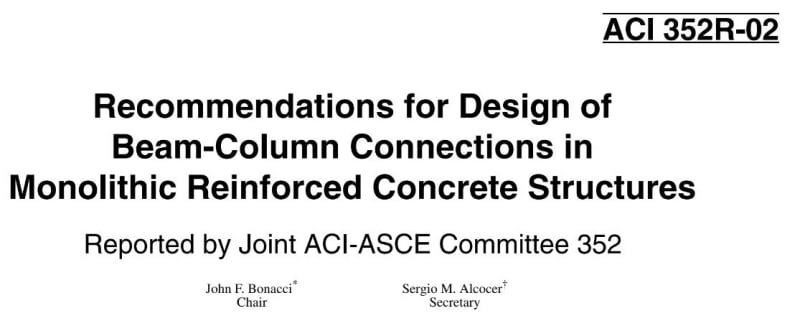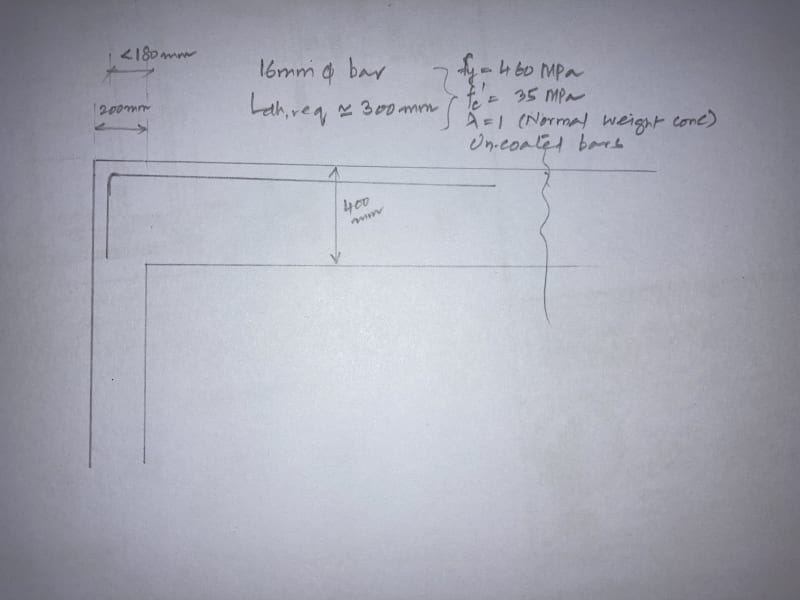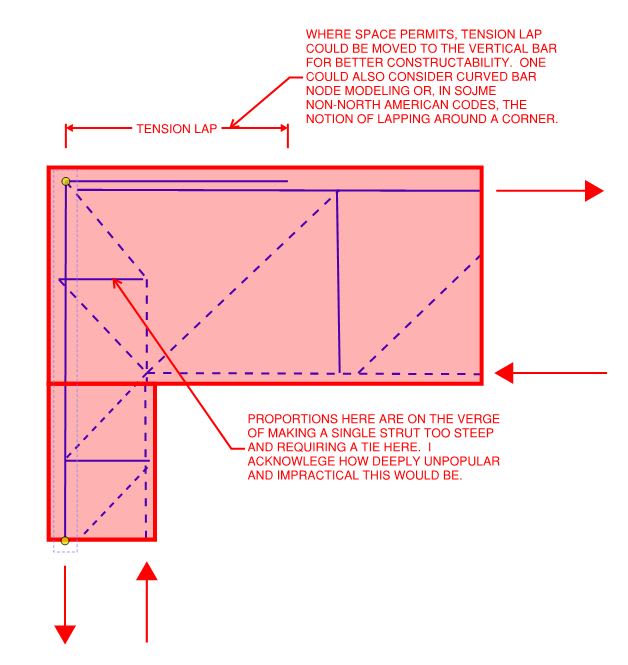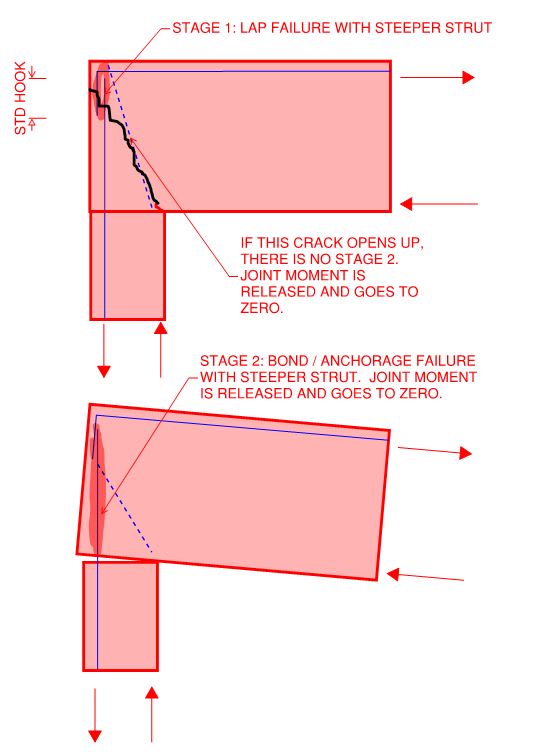Hi,
Let's say you have a concrete beam that hangs off the side of a concrete column. For the rebars that extend from the beam and into the column, I need to calculate the development length. Based on the equation for development length (ACI 318-14 Chapter 25: Section 24.4.2.3), there are variables that relate to transverse reinforcement (Atr), tension reinforcement (s and n from the Ktr equation), Cb, and the Psi factor for casting position. Would these be based off of the geometry and reinforcement of the beam or the column?
Also, the development length would just be the length perpendicular to the wall and any hooks (if using the equation for a hooked bar) wouldn't count towards that, correct?
Thanks,
Let's say you have a concrete beam that hangs off the side of a concrete column. For the rebars that extend from the beam and into the column, I need to calculate the development length. Based on the equation for development length (ACI 318-14 Chapter 25: Section 24.4.2.3), there are variables that relate to transverse reinforcement (Atr), tension reinforcement (s and n from the Ktr equation), Cb, and the Psi factor for casting position. Would these be based off of the geometry and reinforcement of the beam or the column?
Also, the development length would just be the length perpendicular to the wall and any hooks (if using the equation for a hooked bar) wouldn't count towards that, correct?
Thanks,



![[wink] [wink] [wink]](/data/assets/smilies/wink.gif)

